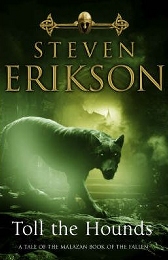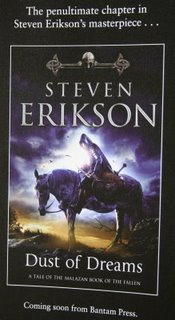(elaboration of a forum post)
Erikson has definitely an inhuman approach.
I’m reading Martin right now for the first time and I can assure you that the most evident difference is how he puts there the characters first, and much later the plot. In the first chapter with Bran he sets up a handy situation to present one by one all his family. Plot points and history are introduced through well placed infodumps, some of them are repeated/redundant every chapter with some more elements added so that the reader isn’t overwhelmed. In any case, even if you miss something, all the focus is on a few characters, living their life relatively unaware. Readers can connect to that, as the tricks are quite common: little boy gets puppy, little girl gets pretty horse, Sansa and Arya with sisterly rivalry and contrasting personality, adding unmotivated cruelty to move feelings. The first and foremost concern of Martin is to know where the reader stands and win him over.
Erikson gets to the plot first, characters eventually come later. Because he isn’t writing an introduction for you. You start with Bridgeburners, but you get to know them better as characters only in book 2 and 3. Martin, writing Erikson’s story, would have started presenting the Bridgeburners one by one, the plot would have come much later, with time. Instead of showing the siege of Pale from Tattersail POV, he probably would have stayed in the trenches with the Bridgeburners and use them to slowly explore the plots from their limited POV. The many of the POVs at the beginning of Martin’s book are “kids” because kids offer a simplified, unaware vision that works well as an introduction point for the reader.
What I mean is that it’s not the number of pages the problem. In fact this story written from a different perspective would take MORE pages, not less. I also think that Erikson’s way isn’t inferior to Martin’s. There isn’t one better than the other, they are just antithetic, aiming for a different result. To appreciate for their difference.
Martin will ALWAYS reach a larger public because his writing is much more approachable, making easier to connect with story and characters. Erikson, deliberately, writes in a different way and doesn’t care to win the reader over. He doesn’t care to make sympathetic characters that readers find easy to connect to. Paran and Felisin may be mistaken for that, but it’s pretty obvious how their paths make them completely alien, instead of familiar.
You can love or hate this, but you can’t mistake it for a lack of skill. Erikson isn’t trying, is non-conformist. His focus is elsewhere and works HARD to avoid making familiar, sympathetic characters. He writes to upset, disappoint and put the reader off balance. He dreads to fall in some common place or typical story. So, when he does something vaguely familiar, twists it so that it is deformed. That’s how Erikson works. He writes in spite of common feelings and writing trappings. He breaks all the rules deliberately and with deep understanding.
Many here enjoy Erikson’s plots, but can’t stand his attitude. So in the longer term they are disappointed, especially when the plot isn’t the absolute focus with its pretty fireworks and all. I may be an exception but I like Erikson for attitude first, and plot and fireworks later. I can’t predict where he goes and I’m not groaning because I see him trying hard to win my sympathy (like I do often with Martin): because he’s not a fraud. I think that the aspect I admire the most in Erikson’s writing is the absolute sincerity. I think he writes for himself more than every other writer I’ve read up to this point. So I share his intent, and follow him silently :)
Martin writes for you, and writes the story the best way to please you. The audience is the protagonist and ultimate focus. Erikson writes for himself, sincerely and without hypocrisy or desires of popularity. Without compromises. He’ll never try to do something to please a reader because that would be betraying what he is and what he does.
Some evidence of this is in the way they work. Some writers write for money or popularity. They are quite easy to recognize because after they get enough money or become popular, they lose their motivation. Martin has some of this. He struggles with the writing, doesn’t find it an easy or pleasant task. He sweats on the books. On his blog he says often that he enjoys “having written” much more than writing. This is symptom of the fact that his true moving motivation comes after, my guess is that he may enjoy more the popularity and satisfaction that comes after the book. This reflects directly in his writing style. He writes to please first and foremost and this is obvious reading his books and I’ve explained above.
I think I read in a interview that the longest vacation Erikson took between the books was ten days. He doesn’t stop writing and keeps an aggressive schedule, writing huge books almost every year. This also is reflected in his writing style. He writes in spite of the audience and I think that the real risk is that he would take his readers with so much antipathy to start doing everything possible to kick them away. I have the impression that he’s scared to meet his readers and find out they are a bunch of idiots. If he writes it is because he finds the motivation within himself only, and has demonstrated that he does absolutely nothing to meet the reader’s desires. If you follow him it is not because he dragged you forcefully down his path, but because you agreed to his work in an uncompromising way. Saying that the books and plots needed to be edited and cut is like saying that his work should be subject to manipulation in order to meet better validation. I don’t think that Erikson refuses this because of some “noble integrity”, but because that would mean lying to himself and obtain an attention he doesn’t desire.
His flaw isn’t in his skill, his flaw is being a niche writer who is exposed to a larger public than the one he writes for.
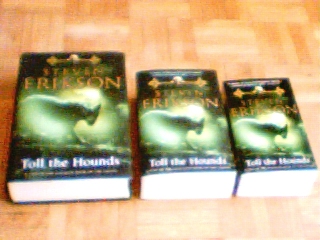
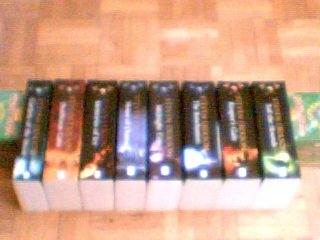
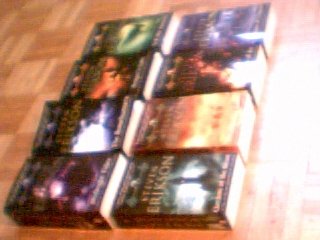
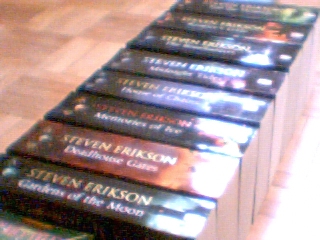
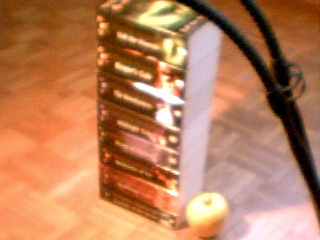
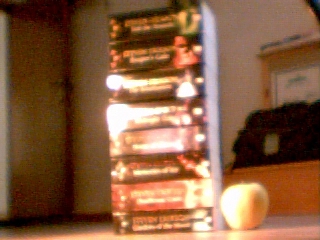
 I’m rather impressed, this is the first cover for a book by Steven Erikson that Tor publishes and that doesn’t suck. Beside the horrible green used in the name, the image is a rather faithful representation of awesome duo (minus the manservant, the real protagonist).
I’m rather impressed, this is the first cover for a book by Steven Erikson that Tor publishes and that doesn’t suck. Beside the horrible green used in the name, the image is a rather faithful representation of awesome duo (minus the manservant, the real protagonist). Return of the Crimson Guard, second book by Esslemont and suggested read after The Bonehunters or Reaper’s Gale, is out in mass market format in UK and available at the usual places. (
Return of the Crimson Guard, second book by Esslemont and suggested read after The Bonehunters or Reaper’s Gale, is out in mass market format in UK and available at the usual places. (